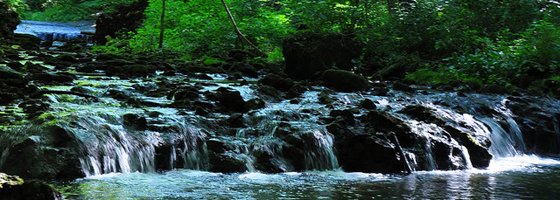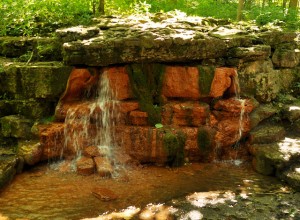Students monitor Ohio streams through university partnership

In 2011, Audrey McGowin converted the environmental chemistry course she teaches at Wright State University into a service-learning experience that put her students at the helm of a long-term water quality monitoring project at a nearby nature preserve.
McGowin, an associate professor of chemistry at the school in Dayton, Ohio, wanted to shift the course’s emphasis from test and lectures to real-life experience that could help the community.
“I got to thinking about making chemistry more relevant and having the students doing something real,” she said.
It worked. Within a few semesters of the change, her students had detected high phosphate levels in a stream running through Glen Helen Nature Preserve, likely the result of a wastewater treatment plant exceeding its discharge permit.
The course’s service-learning structure took the problem beyond the laboratory and chemical analysis. Once the students calculated the phosphorous loading and found the plant potentially violating its permit, they had to figure out what to do with this potentially sensitive piece of information.
“That’s really the great thing about this class—when we find things like this, it goes to the class for discussion,” McGowin said. “What should we do? Should we tell the public right away? Should we get some confirmation?”
“Part of presenting this information to the public is learning to do that responsibly,” she said.
Ultimately, McGowin took the information to the Ohio Environmental Protection Agency, which confirmed the readings. The students included the findings in a professional poster presentation, one of the capstone projects for the course. The poster is archived at Wright State and available online.
An article describing the course’s inaugural run in 2011, which was a partnership between Wright State and Antioch College, was recently published online by the Journal of Chemical Education.
That year, the class consisted of upper-level undergraduate and graduate chemistry students from Wright State and students participating through a first-year seminar course on water at Antioch College, a small liberal arts school in Yellow Springs, Ohio.

Students tested water quality in the Yellow Spring, from which Yellow Springs, Ohio gets its name. (Credit: bobosh_t, via Flickr)
The students were responsible for planning sampling trips at the Glen Helen Nature Preserve, a 1,000-acre slice of land owned by Antioch College. Several streams flow through the preserve, including the Little Miami River and Yellow Springs Creek. Potential water quality threats from stormwater and industrial runoff and the discharges from a nearby wastewater treatment plant.
The students measure pH, temperature and dissolved oxygen on site and collected samples for laboratory analysis. Those analyses include tests for anions like nitrate and phosphate, a dozen trace metals, biological oxygen demand, and E. coli and coliform bacteria.
The class also emphasizes good laboratory practices, including proper note taking and development of standard operating procedures based on U.S. Environmental Protection Agency methods. That gives the students realistic professional experience that isn’t always a part of science education.
“When I went out in the world of work with a Ph.D, I didn’t have any idea what good laboratory practices were,” McGowin said. “No one ever mentioned it.”
The environmental chemistry course is entering its third semester since taking the service-learning approach and seems to be thriving under the model. Students’ evaluations rate the course as more challenging but contributing more to their learning compared with the previous lecture-based version. Meanwhile, the people at the Glen Helen Ecology Institute are pleased to have an environmental monitoring program providing them with quality data, McGowin said.
The students and community aren’t the only ones who benefit.
“It’s been rewarding for me as a faculty member. It’s rejuvenated my teaching,” McGowin said. “The main issue to me is doing something relevant.”
Top image: A waterfall within the Glen Helen Nature Preserve where Wright State University chemistry students monitor water quality (Credit: bobosh_t, via Flickr)





0 comments